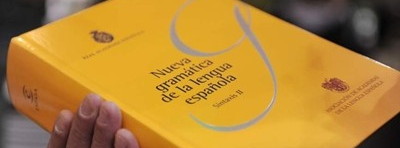 Presente progresivo
Presente progresivo
In Spanish, the present simple is often used to describe events or actions happening at or around the moment of speaking (see present simple uses). This can sound strange to English-speaking learners, who are used to using the present continuous for events in progress, except in newspaper headlines or in sporting commentary or when talking about permanent facts or habits; e.g. 'Brits retire in Spain', 'the earth spins around the sun', 'Ronaldo runs up the wing', etc.
Statements like '¿Te ríes de mí?' or 'Me haces daño' can sound like they are referring to permanent situations or habitual actions rather than events taking place in that moment. In Spanish, both the present continuous and simple can be used in many cases, and the choice can be a tricky decision for learners.
The main difference is that the present continuous emphasizes the fact that the action or event is in progress or occurring at the very moment of speaking or writing, i.e. it's "in the middle of" happening.1
For this reason, the continuous is more common in spoken Spanish, while you will come across the present simple far more in the press and literature, which usually describes events taking place around the time of writing.
"[...] el lenguaje oral muestra preferencia por la perífrasis 'estar + gerundio', mientras que el escrito prefiere el Presente o el Pretérito Imperfecto [...]. Las formas Progresivas, mucho más especializadas en su uso, eliminan el riesgo de ambigüedad". 2
1) When opting for the present simple, similar to its use with future meaning (see presente prospectivo), context is usually needed to clarify that we are indeed dealing with a temporary event in progress rather than a general truth or habitual action or even a future event.
As dicussed in Predicado télico, verbs that involve a lasting event with no natural limit are more commonly used in present continuous when referring to a specific point in time; this avoids confusion with cyclic or habitual actions.3-4
"Los textos muestran que «estar + gerundio» se usa de forma preferente con verbos que denotan actividades, es decir, eventos sin límite natural, como en 'estuvo (esperando - lloviendo - manejando - mirando - pensando - trabajando - viviendo). De hecho, en la lengua hablada «estar + gerundio» es la forma usual para expresar que una acción durativa está en curso en el momento del habla (en presente) o en un momento anterior (el imperfecto)". RAE
1) Me haces daño — You hurt me / you are hurting me?? (without more context it is ambiguous)
-Suéltame. Me haces daño — You are hurting me (clearly in the present)
→Me estás haciendo daño — You are hurting me (clearly in progress in the present, emphasis on right now)
2) Te llamo — I call you, I will call you, I am calling you, I've called you?? (without context it is possibly ambiguous -read more)
-Te llamo para decirte que no puedo ir al trabajo — I'm calling to tell you that I can't go to work (clearly present, Spanish doesn't consider the call itself to be in progress here)
-Si no estás seguro, llámalo — If you aren't sure, call him
→Lo estoy llamando — I am calling him (emphasizing the fact you are doing it right now, the event is in progress)
3) ¿Por qué te ríes? — Why are you laughing? (Why do you laugh? - not necessarily laughing at that precise moment)
-No me río — I'm not laughing (I don't laugh - possible interpretation)
→Sí, te estás riendo — Yes, you are laughing (focus on now, emphasize the fact they are still or repeatedly laughing, make it more vivid)
4) ¿Qué dice Juan? — What is Juan saying? (What does he say, what's his opinion, focus on the circumstantial information)
→¿Qué está diciendo Juan? — What is Juan saying? (right now, focus on the event in progress, what exactly are his words at this moment)
5) ¿Qué pasa? — What's up/ what's wrong? (what's happening around this time, what circumstantial things are going on)
-Mi novia me ha dejado y estoy triste (events taking place around the time of speaking and states which are not usually used in continuous)
→¿Qué está pasando aquí? — What's happening/ what's going on here? (right now, in progress in this moment, emphatic)
→Juan está hecho una furia y está rompiendo cosas (events unfolding at the time of speaking, more immediate and temporary, still in progress)
6) Los inmigrantes sirios huyen de su país — Syrian immigrants are fleeing from their country (logically something temporary, context will clarify that- something that is ongoing but not necessarily happening in this instant, more likely in written Spanish)
-Si se está tan mal allí, ¿por qué se quedan? — If it's so bad there, why do they stay?
→¿Pero qué dices? ¿No ves la tele? -Están huyendo — What are you talking about? Don't you watch TV? They are fleeing? (focus on the present, right now they are in the middle of fleeing, more vivid and emphatic, more likely in spoken Spanish)
7) La última frontera se derrite a pasos agigantados, no hay ya lugar a dudas — The last frontier is melting at a rate of knots; there is no doubt about it (a situation that is ongoing but not necessarily happening as we speak, more background fact)
→Esto es impresionante. Mira aquel casquete, se está derritiendo delante de nuestros ojos — This is amazing. Look at that ice sheet there; you can see it's melting right in front of us (we can see it is indeed happening right now, in progress, more vivid and temporary)
2) Similar to English, the present continuous (estar + gerundio) can also be used to express habitual actions, especially when they are seen as temporary situations –usually made clear by words such as 'últimamente'.6
-Estás fumando (fumas) mucho últimamente — You've been smoking a lot recently/lately
-Las empresas están pagando (pagan) cada vez menos — Companies are paying less and less
3) Verbs of motion, such as ir, venir, and volver, are usually used in present simple unless emphasizing the movement in the present.
"Una prueba adicional de que los verbos de movimiento se resisten en español a combinarse con la forma 'estar+gerundio' la proporciona el escasísimo número de ejemplos que podemos hallar en el CREA. En efecto, el sintagma 'está yendo' aparece únicamente en 33 ocasiones en la totalidad de textos de variedad peninsular del CREA [...]".5
-¿Dónde está Juan? — Where's Juan?
-Viene ahora mismo — He's just coming [Maybe about to come]
→Está viniendo ahora mismo [He's on his way; emphatic]
-Abre la puerta, Juan — Open the door, Juan
-¡Voy! — I'm coming! [See ir vs. venir]
4) With stative or feeling verbs, however, Spanish is very similar to English in that the use of the continuous is not the norm, and it should only be used in certain really emphatic circumstances.
-¿Te gusta la comida? — Do you like the food?
-¡Sí, me está encantando! — Yes, I'm loving it! (emphasis on right now, a lot)
-Me está apeteciendo un postre — I fancy a dessert
In Español-Avanzado Articles
˜
-Presente progresivo español-

